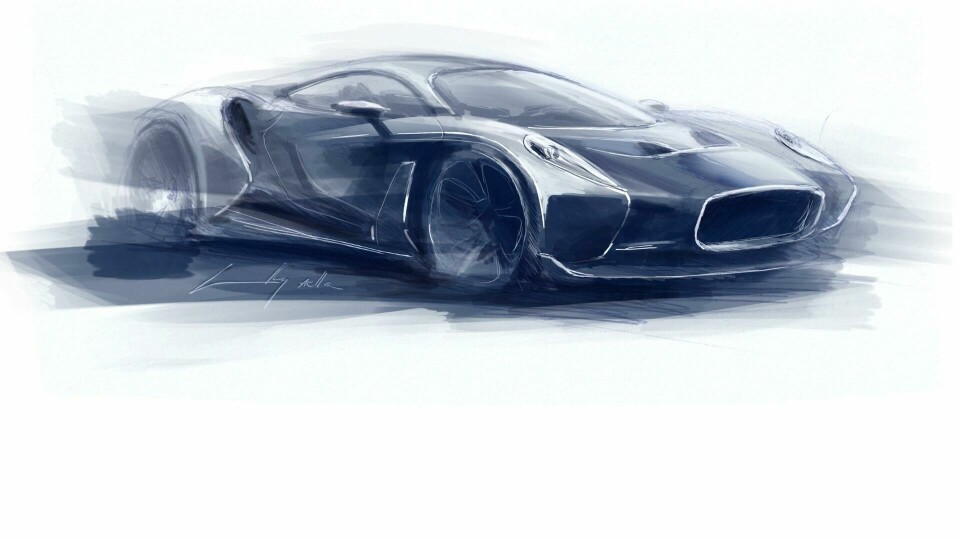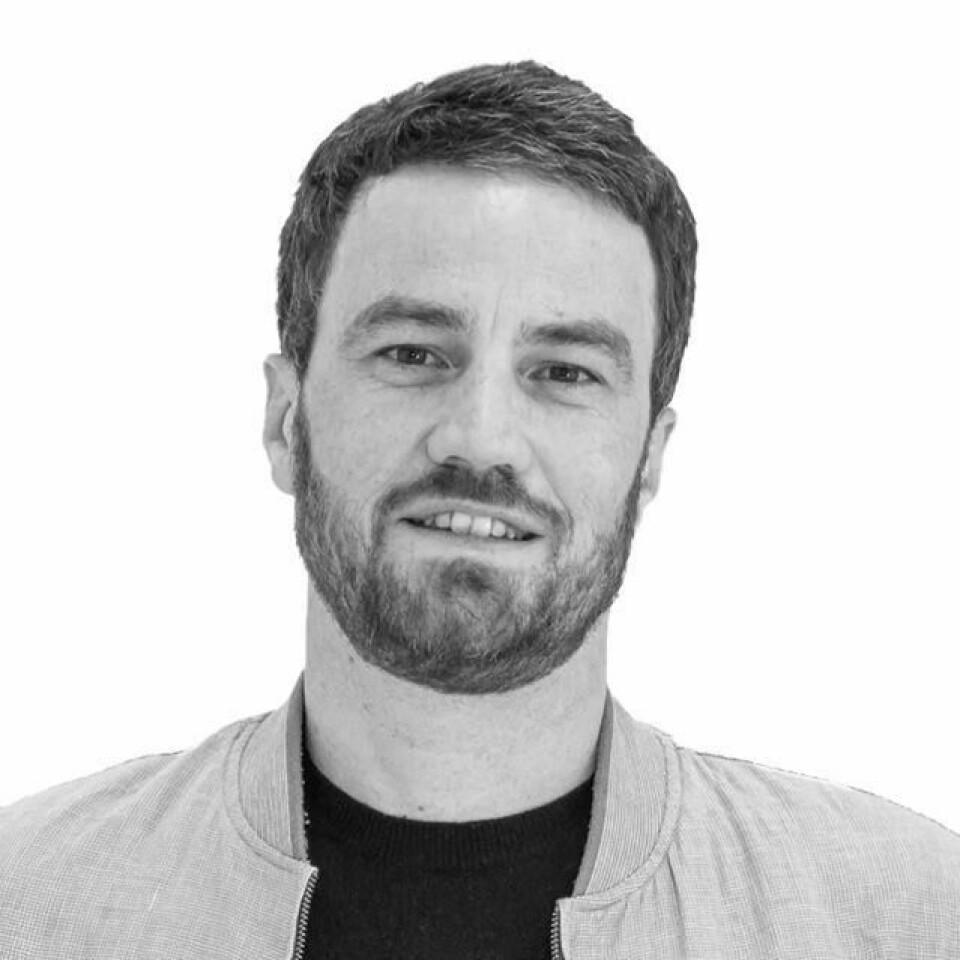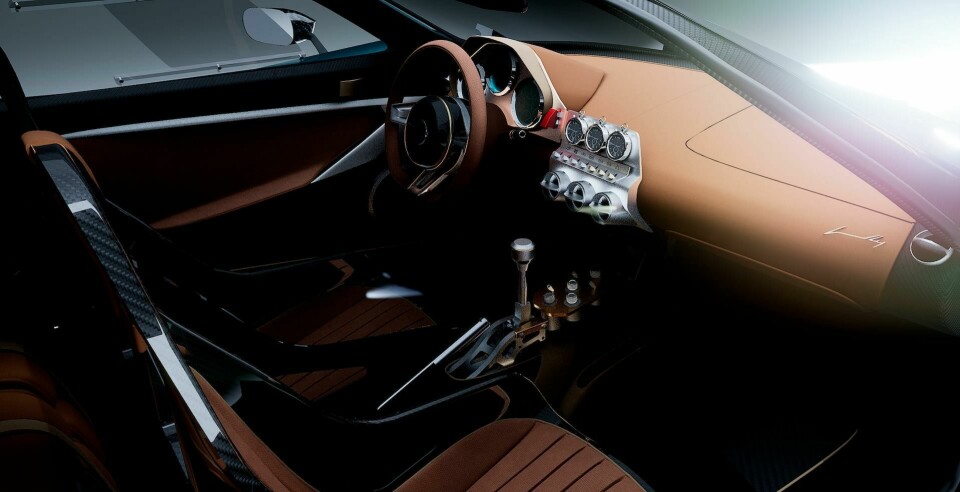
Caterham design boss Anthony Jannarelly on his new ‘Art Car’ capsule range
Car Design News catches up with the French designer as he launches his new carbon-panelled, Ferrari-based Ælla-60
Anthony Jannarelly used the Retromobile show in Paris to give potential customers their first glimpse of the Ælla-60. It’s the launch product of Art Machines by Anthony Jannarelly, each example of which is likely to follow the same principle of placing a new carbon body atop a donor car. In this case, a Ferrari 360 Modena.

That means a more attainable price – all things being relative – of €865,000 (US$906,000). “In a perfect world we could make a car for €200,000 and produce 200 of them,” admits the French designer. “But if we created a new chassis and performed all the crash tests, we would not be able to sell the car for under a million.”
Up to 60 will be made, though production and development only really begin once his first five customers have assembled. We sat down with Jannarelly for a deeper dive into his latest car plus an update on the Caterham Project V.
Car Design News: How did the design process begin on this car?
Anthony Jannarelly: I always start with sketching, but more for the details… To get the overall feel as I explain the surfaces. Very quickly I switch to CAD because I always consider cars as a sculpture.
You could spend hours on a sketch, trying to make everything clean, then suddenly realise it doesn’t really work in three dimensions. There’s no clay model yet. We’ve used a VR headset to show it to potential customers.
It’s very striking in VR compared to on a computer screen; it’s close to the exact volume.
CDN: What is the aim with the car?
AJ: We had clients who liked our previous car but wanted a bigger, more premium product. The purpose was to find a chassis from a donor car, which meant the size and engine package was a given.
I had to adapt the style of the Design-1 onto this new package. I knew that the front end could keep a very strong family feeling, but a central, longitudinal engine means the wheelbase is longer and the cockpit slightly more forward.
If Design-1 is a sports car then this is a supercar. It has to be more extreme, so I tried to push the proportions.
This is where I relish the chance to work with a small, niche audience
CDN: Your cars typically have a front-engine silhouette, despite being mid-engine. Why is that?
AJ: What I like to do is balance the cabin; to place it exactly in the middle of the car. Lots of modern supercars are very cab-forward for packaging reasons. This is where I relish the chance to work with a small, niche audience.
With a classic car, if you’re tall your head is very close to the roof. At some point OEMs didn’t accept that and there was a new brief to create a bigger cabin with the A-pillars further away. I go back to basics.
Yes, the windshield is super inclined and close to your head, but if you see the side profile you’ll see the highest point of the car is balanced and central.
CDN: Is this a key contribution to your ‘retro-futuristic’ style?
AJ: With modern cars, you often produce a high rear end because you’re guided by luggage space or aerodynamics. If Ælla-60 is not the most streamlined, I don’t really care. I wanted to make sure that we don’t create lift, so there’s a small spoiler, but it’s carved inside the body.
The overall shape takes styling cues from the 1960s. It’s really tapered and shrink-wrapped like a vintage car, but the surfaces are modern in the way they merge. When you created aluminium panels by hand it was too complicated to merge surfaces like this.
I also thought a lot about where to place the exhaust pipes; I decided to put them on each side so they would be highly visible. It was key to show that this is a petrol-powered car.
CDN: There’s a crowdfunding vibe to the first five buyers; how can those initial customers expect to contribute to the project?
AJ: They will not redesign the car but they will be very influential on many decisions such as the ergonomics or suspension. Maybe they want to tweak the gear lever in a certain way or the want something that rides a little softer.
That’s another benefit to using an existing platform that is a bit older – it’s easy to tweak and to set up.
With Design-1, customers created this experience in a natural way. One of them has followed everything with us. He told us what was wrong on the car. He even became best man at my wedding!
I want to create a club with our clients where every three years, we’ll launch a new design and another short limited series
CDN: It’ll be built by Podium Advanced Technologies, which has worked on similar projects such as the Delta Futurista. What are the benefits?
AJ: They strike a good balance between working like an OEM and being more artisanal. This approach is exactly what I need as a designer. We talk about each panel gap in advance of development.
Working with Podium for production also means we can naturally scale up with demand. I didn’t want to recreate our own company, own manufacturing facilities, because then you struggle with scaling up human resources.

Podium is big enough to be able to accommodate its production according to the demand. We have a ten-year plan on this type of strategy. That is why I call it Art Machines by Anthony Janarelly. I want to create a club with our clients where every three years, we’ll launch a new design and another short limited series. Less like a traditional brand and more like a capsule in a fashion collection.
CDN: How is the progress of Caterham Project V, which we saw in 2023?
AJ: I cannot say much but it’s in the prototyping phase and I have been working on it. The engineers have new constraints as they turn it into a production car, and I have to ensure they keep the same shape.
It’s a question of tweaking the proportions so that when you see the car you’re like, ‘oh yeah, it’s about the same as the concept’. All the panels will be different but it should look the same. What’s funny is that Ælla-60 was designed before the Caterham project – we were just waiting to make the project viable. Which we have with Podium and our donor car.


















